Exploring the effect of shoulder thinning in Cabernet Franc (2023)
Joyce and Stephen Rigby
Boxwood Winery
Abstract
Rich mouthfeel is a hallmark of quality red wine. The mouthfeel of a wine is influenced by its astringency, fruit concentration, alcohol content, and acidity. Both astringency and fruit concentration are a function of grape quality and maturity and are difficult to correct in the winery. At Boxwood, vines are planted in closely spaced vines and rows, with judicious crop thinning to fewer than 12 clusters per vine. The purpose of this experiment was to determine if removing the shoulders of the remaining clusters would lead to improved mouthfeel in the finished wine. A single block of Cabernet Franc clone 214 on 101-14 rootstock was divided into six sections of three rows each. All sections were thinned according to the standard protocol. In three of the six sections, shoulders were removed from the remaining clusters. Fruit samples were collected from each replicate just prior to harvest. Three treatment replicates were combined in a single harvest lot to produce production scale wine. There were no differences in fruit chemistry, berry weight, or cluster weight between treatments at harvest. Anthocyanin and tannin concentrations were higher in samples from fruit with shoulders removed, but this difference was not found in the finished wine. The wines were not different in a triangle test, and there were no significant differences in descriptive scores for fruit intensity, fruit character, herbaceous/green character, nor the intensity of astringency. When asked to compare the feeling of astringency to the tactile sensation of 4 different fabric standards, the wine produced from shoulder-thinned fruit was most often described as having suede-like tannin texture while the astringency of wine made from fruit with standard thinning was most often described as “sandpaper”.
Experimental Questions
The vineyard at Boxwood is planted in close spacing with long rows spaced 2 meters apart and vines 1 meter apart. Clusters thinning occurs at veraison, leaving a maximum of 10-12 clusters per vine. The following instructions are given to the crew when cluster thinning:
- If a shoot reaches only the first set of catch wires, all fruit is removed.
- If a shoot reaches only the second set of catch wires, fruit is thinned to a single cluster per shoot. For very thin shoots, all clusters are removed.
- No more than 12 clusters per vine should remain on strong, older vines. No more than 8 clusters per vine should remain on young vines.
- Clusters are selected for removal so that no clusters are touching one another after thinning has been completed.
Despite these guidelines, in some vintages, fruit lacks the desired level of intensity and concentration. In a WRE experiment in 2022, a single block of Cabernet Franc (clone 214 on 101-14 rootstock) was divided into three blocks, each receiving a different treatment: thinning at veraison, thinning at veraison with shoulders removed, thinning 4 weeks prior to veraison. The early thinning treatment did not produce higher sugar or phenolics. Thinning of clusters plus shoulders at veraison showed some improvement. In this treatment, fruit samples collected just prior to harvest had higher Brix. Wine made from fruit with shoulders removed had higher tannin concentration than wine made from either of the other treatments (389 vs.366 and 357 mg/L). These treatment lots were relatively small and fermentation conditions were not fully reflective of normal production scale winemaking at Boxwood, so no sensory analysis was done.
In 2023, all thinning treatments were completed at veraison. Two treatment conditions were tested. In the “control” condition, Cabernet Franc was thinned to 10-12 clusters per vine. In the “shoulders removed” condition, Cabernet Franc was thinned to 10-12 cluster per shoot with shoulders removed.
Methods
A single block of Cabernet Franc clone 214 grafted on 101-14 rootstock extends from row 32 to 43 of the vineyard, with an alley between rows 34 and 35. Treatments were assigned in groups of three rows (Figure 1), with treatment condition randomly assigned among the groups and marked with color coded flagging tape.
Figure 1: Rows 32 – 49 (Cabernet Franc clone 214) were broken into 6 groups of three rows each, with treatments randomly assigned between groups. Other varieties/clones are plated on either side of the block, and there is an alley running between rows 34 and 35. Fruit samples were collected from the middle row of each treatment to avoid edge effects.
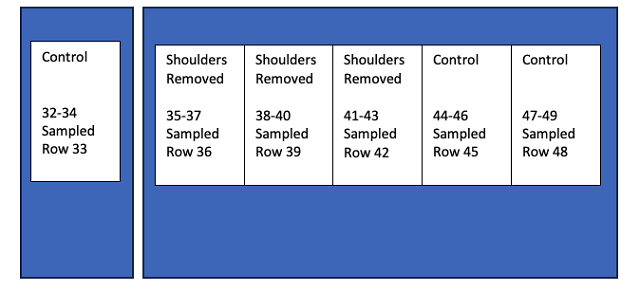
Within one week of harvest (on 9/28), yield per vine was estimated using the protocol found in Appendix A. To assess fruit metrics, WRE staff collected a 400-berry sample from both sides of the middle row of each 3-row section using a modified cluster sample. From that sample:
- Grape berry weight was calculated by averaging the weight of three groups of 100 berries each.
- Grape phenolics were measured using a 250 gram sample of intact grapes sent overnight with refrigeration to ETS labs (St. Helena, Ca)
- Brix, pH, and TA were determined for each replicate by WRE staff. Malic acid and YAN were measured at Imbibe solutions.
Fruit from all three replicates of each treatment was combined for winemaking. Fruit was hand-picked into lugs on 10/8 then chilled overnight. On 10/9, fruit was destemmed and machine sorted, then transported by conveyer to fermentation tank with the addition of 25 mg/L SO2. After 24 hours, 16% of the estimated volume of juice was removed (bled) from each tank. After a 4-day cold soak, must was inoculated with CVRP yeast and allowed to ferment without temperature control. (Fermentation temperature did not exceed 85°F.) Fermaid O was added to a target YAN of 190 mg/L (a 30 mg/L addition) after 1/3 Brix depletion. Tartaric acid addition (1.4 g/L) was also made around this time. Sugar depletion was completed on 10/26. Wine was pressed off skins after 5 days of extended maceration (on 10/31). Wine settled in tank for two weeks, then inoculated with Elios 1 before it was transferred to barrels for malolactic fermentation. Malolactic fermentation was monitored by paper chromatography, and 40 mg/L SO2 was added (in January) after all malic acid had been depleted.
Sensory analysis of Cabernet Franc made from wine with standard cluster thinning vs. cluster thinning plus shoulder removal was completed by a panel of 31 wine producers in March of 2024. Wines were presented blind in randomly numbered glasses. Tasters were presented with three wines, two of one type and one of the other, and asked to identify which wine was different (a triangle test). To account for order effects, there were four tasting groups with the unique wine in the triangle test balanced between groups. Tasters were then asked to score each wine on a scale of 0 to 10 for fruit intensity, fruit character (defined on a scale from bright/fresh/red to dark/black/dried), herbaceous/green character, and the intensity of astringency. They were also given open ended questions to describe the wines. Results for the triangle test were analyzed using a one-tailed Z test. Tasters were also given 4 different fabric standards (in order from softest to roughest; soft suede, velvet, sandpaper and burlap) and were asked to select the fabric that most closely represented the tactile sensation produced by the astringency of the wine. Fabrics were chosen to include an increasingly rough tactile perception. Descriptive scores were analyzed using repeated measures ANOVA.
Results
Grape chemistry indicated that the fruit was ripe at the time of harvest, with no difference in fruit chemistry cluster weight, or berry weight (Table 1) between treatments. There were some notable differences in berry phenolics.
Table 1: Fruit chemistry for two treatments of Cabernet Franc. Values shown are a average of three vineyard samples with standard deviation shown in parentheses (WRE, 9/28)

The ETS Grape Phenolic Panel is designed to measure the concentration of phenolic compounds that would likely be extracted during an alcoholic fermentation. Sample preparation includes a heated wine-like treatment rather than total homogenization of the sample1. As grapes ripen, the pool of anthocyanins is dynamic, with synthesis and degradation both occurring at the same time. From veraison until physiological ripeness, anthocyanin synthesis outpaces degradation such that the overall anthocyanin concentration increases. After physiological ripeness, degradation outpaces synthesis so that there is an overall decrease in anthocyanin concentration1.
Tannin concentration is also in flux. Both skin and seed tannins are formed prior to veraison, however their extractability changes during ripening. From veraison to phenolic ripeness, high concentration of tannins at the surface of the seeds undergo enzymatic oxidation leading to lignification, making seed tannins less extractable. By contrast, ripening of skin cells (and weakening of their cell walls) make skin tannins more extractable. Catechin is used as a marker for seed tannins in this index and the catechin:tannin ratio indicates the “seediness” of the tannin component. Lower catechin overall, and lower catechin:tannin ratios indicate riper fruit. Quercetin glycosides are a marker for skin tannin extractability such that increased levels indicate riper fruit (Table 2).1
Table 2: Explanation of measurements used in the ETS Red Grape Phenolic Panel (ETS, Price)
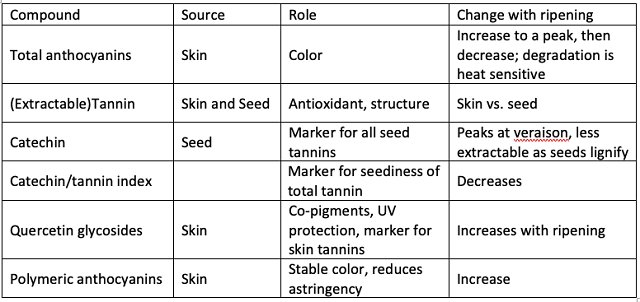
At Boxwood, fruit with shoulders removed had a higher concentration of total anthocyanins, though the concentration of polymeric anthocyanins was the same between treatments. Tannin concentration also increased with treatment, however that increase seems to have come from catechin (seed tannins) rather than quercetin (skin tannin) (Table 3, Figure 2), indicating this fruit may have had less phenolic ripeness.
Table 3: Grape Phenolic Panel for two treatments of Cabernet Franc (ETS Labs). Values shown are averages from three replicates (SD). All measures are reported in mg/L.

Figure 2: Grape Phenolic Measures (ETS labs)
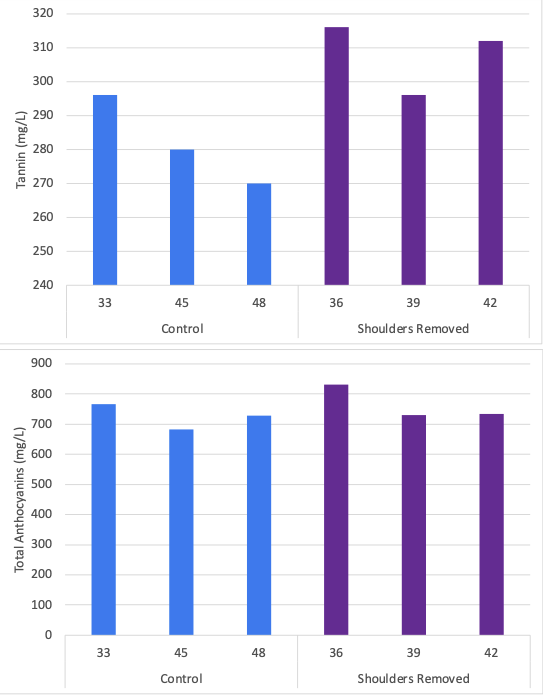
At harvest, the chemistry of the must (post cold soak) was very similar between treatments (Table 4), leading to wine chemistry with comparable ethanol and acetic acid values (Table 5). Wine pH was lower in the shoulder-removal treatment, with higher TA, further indicating less “ripe” fruit.
The green pepper character often associated with underripe Bordeaux varieties is a concern at Boxwood. Though 3-Isobutyl-2-methoxypyrazine (IBMP), one of the compounds that leads to bell pepper aromas, may diminish as grapes ripen, lower crop load may lead to higher concentration per grape berry. Severe crop thinning may present a trade-off in this regard. In 2023 Boxwood Cab Franc, IBMP was nearly the same between treatments (Table 6), just below the lower limit of sensory threshold for this compound, which is 6-15 ng/L (ETS Labs).
Table 4: Must chemistry of two treatments of Cabernet Franc at harvest (Vinterra)

Table 5: Wine chemistry of two treatments of Cabernet Franc (ICV Labs, ETS)

Color intensity was slightly higher in the wine from fruit with thinned shoulders (Figure 3). This was likely due to lower pH, as anthocyanin concentrations was not higher in this wine (Table 6). Wine made from fruit with the shoulders removed had overall lower concentration of phenolics (Figure 4, Table 7).
Figure 3: Color intensity of two treatments of Cabernet Franc (ICV Labs)
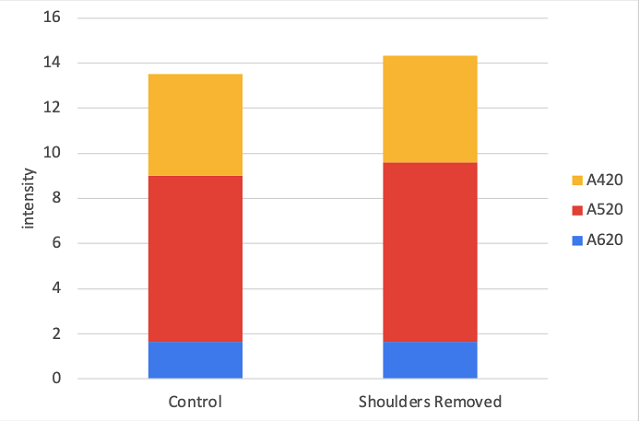
Table 6: Anthocyanin concentrations (mg/L) of two treatments of Cab Franc (ETS)

Figure 4: Proportional difference in wine phenolics of two treatments of Cabernet Franc (ETS)
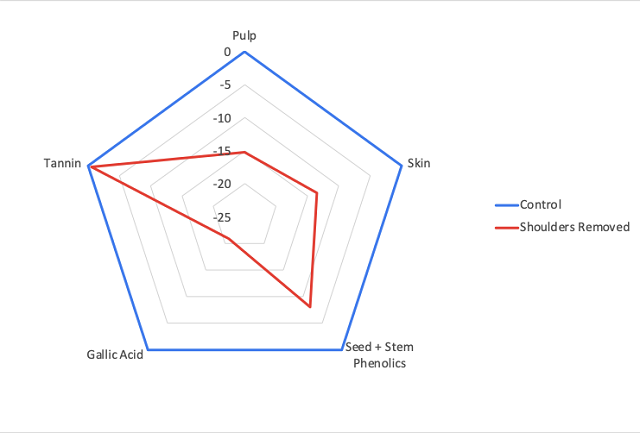
Table 7: Wine phenolics (mg/L) of two treatments of Cabernet Franc (ETS)

In a triangle test comparing Cabernet Franc made from fruit that was thinned according to the standard protocol vs. with shoulders removed, 8 out of 31 respondents were able to distinguish which wine was different, indicating the wines were not significantly different (Z=-1.08, p > 0.5). There were also no significant differences in scores for any of the descriptors (Table 8). When asked to compare the astringency of wine to 4 different fabric samples, the wine produced from fruit with shoulders removed was scored as having smoother tannins (suede) while the astringency of wine made from fruit with standard thinning was most often described as “sandpaper” (Figure 5).
Table 8: Descriptive statistics for two treatments of Cabernet Franc

Figure 5: Fabric standards were used to describe the texture of tannins in wine made from thinned fruit vs. fruit thinned with shoulders removed.
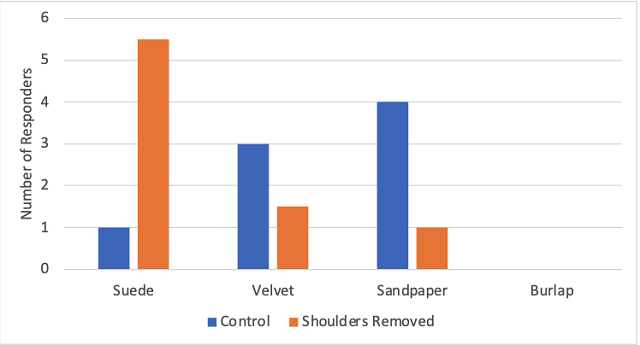
Reference
(1) Price, S. F. Phenolic Maturation in Grapes Including Frequently Asked Questions and Some Virginia Case Studies, 2023.
Appendix A: Yield Estimation in WRE Experiments
Ideally, measures of yield are taken within one week of harvest. To avoid bias of cluster size and exposure, all of the clusters on each selected vine was removed. If present, leaves were removed from the fruit zone prior to harvesting, to better determine which clusters belong to a single vine.
To determine yield:
- One vine within the treatment area was selected using a random number generator.
- All of the clusters from this vine were harvested into one lug. The lug was marked for the treatment and row.
- Cluster weight was determined by the following steps:
- An empty lug was weighed
- All of the clusters from the sample lug were moved into the empty lug, counting the clusters as they were moved.
- The lug was weighted after all clusters had been moved.
- Total cluster weight per vine was the weight of the full lug minus the weight of the empty lug.
- Average cluster weight was determined by dividing total cluster weight for the vine by the number of clusters for that vin
- Three vines per replicate were measured in this way, then values were averaged.
